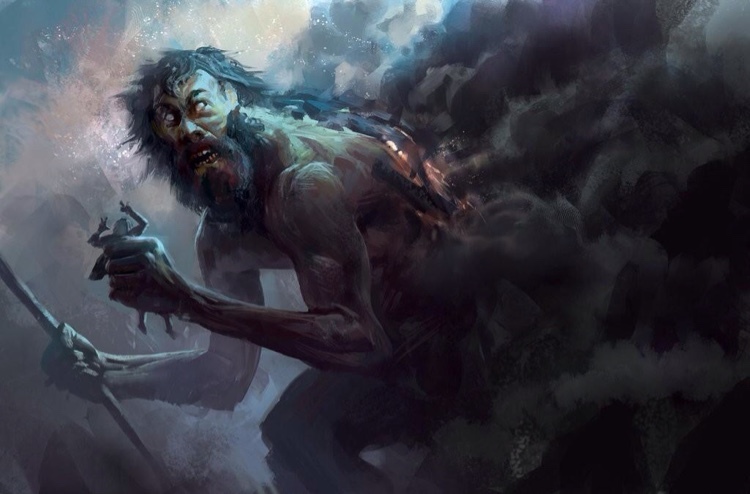.......ZEUS = DYAUS.......
Zeus in myth
Zeus, in ancient Greek religion, chief deity of the pantheon, a sky and weather
god who was identical with the Roman god Jupiter. His name clearly comes from that of the sky god Dyaus of the ancient Hindu Rigveda. Zeus was regarded as the sender of thunder and lightning, rain, and winds, and his traditional weapon was the thunderbolt. He was called the father (i.e., the ruler and protector) of both gods and men
Birth
Cronus sired several children by Rhea: Hestia, Demeter, Hera, Hades,
and Poseidon,
but swallowed them all as soon as they were born, since he had learned from Gaia and Uranus that
he was destined to be overcome by his own son as he had overthrown his own
father—an oracle that Rhea was to hear and avert.
When Zeus was
about to be born, Rhea sought Gaia to devise a plan to save him, so that Cronus
would get his retribution for his acts against Uranus and his own children.
Rhea gave birth to Zeus in Crete, handing Cronus a rock wrapped in swaddling
clothes, which he promptly swallowed.
Infancy
Rhea hid Zeus in a
cave on Mount Ida in
Crete. According to varying versions of the story:
1. He was then raised by Gaia.
2. He was raised by a goat named Amalthea, while a company of Kouretes—
soldiers, or smaller gods— danced, shouted and clashed their spears against
their shields so that Cronus would not hear the baby's cry (see cornucopia).
3. He was raised by a nymph named Adamanthea. Since Cronus ruled over the Earth,
the heavens and the sea,
she hid him by dangling him on arope from
a tree so he was suspended between earth, sea
and sky and thus, invisible to his father.
4. He was raised by a nymph named Cynosura.
In gratitude, Zeus placed her among the stars.
6. He was raised by a shepherd family
under the promise that their sheep would be saved from wolves.
King of the gods
After
reaching manhood, Zeus forced Cronus to disgorge first the stone (which was set
down at Pytho under the glens of Parnassus to be a sign to mortal men, the Omphalos)
then his siblings in reverse order of swallowing. In some versions, Metis gave Cronus
an emetic to force him to disgorge the babies,
or Zeus cut Cronus' stomach open. Then Zeus released the brothers
of Cronus, the Gigantes,
the Hecatonchires and
the Cyclopes,
from their dungeon inTartarus, killing their guard, Campe.
As a token of their appreciation, the Cyclopes gave him thunder and the thunderbolt, or lightning,
which had previously been hidden by Gaia. Together, Zeus and his brothers and
sisters, along with the Gigantes, Hecatonchires and Cyclopes overthrew Cronus
and the other Titans, in the combat called theTitanomachy. The defeated Titans were then cast into a shadowy
underworld region known as Tartarus. Atlas, one of the titans that fought against Zeus, was punished
by having to hold up the sky.
After the battle with the Titans, Zeus shared the world
with his elder brothers, Poseidon and Hades,
by drawing lots: Zeus got the sky and air, Poseidon the waters, and Hades the
world of the dead (the underworld). The ancient Earth, Gaia, could not be claimed; she was left to all three, each
according to their capabilities, which explains why Poseidon was the
"earth-shaker" (the god of earthquakes) and Hades claimed the humans
that died (see alsoPenthus).
Gaia resented the way Zeus had treated the Titans, because
they were her children. Soon after taking the throne as king of the gods, Zeus
had to fight some of Gaia's other children, the monsters Typhon and Echidna. He vanquished Typhon and
trapped him under Mount Etna, but left Echidna and her children alive.
Dyaus Pita
In the Vedic pantheon Dyauṣ Pitā or Dyaus
Pitar is the Sky Father, divine consort of the Prithvi and father of Agni,
Indra (RV 4.17.4), and Ushas, the daughter representing dawn. In archaic Vedic
lore, Dyauṣ Pitṛ and Prithivi Matṛ were one,
single composite dvandva entity, named as the Dyavaprthivi. He was cursed by Vasishta
maharishi for hurting Nandini, the sacred cow with a thorny stick. He is
believed to have taken rebirth as Bhishma and die according to his Karma, after
being pierced by many arrows, for inflicting wounds on Nandini. In Rig
Veda, the abode of Dyaus Dyulok is regarded as Fountain-head of God - the
Primeval Purusha. After the death of Dyaus pita, his son Indra became to new king of Gods.
Other, similar deities
Etymologically, the name Dyaus is derived from
Proto-Indo-European root word morpheme *dyeu- (zero-grade forms *dyu- and
*diw-) with the meaning 'to shine'. Words related to Dyaus in Sanskrit include
divasa 'day', divya 'divine, celestial', dyota 'light, shining', etc.
Dyauṣ Pitṛ is the Sanskrit version of the Proto-Indo-European sky god
concept personified by *Dyeus, who appears in many other Indo-European
religions with similar attributes. Dyeus was addressed as Dyeu Ph2ter,
literally "Sky Father" or "shining father", as reflected in
Latin Jupiter; Diēspiter and Greek Zeus
pater.
In his aspect as a father god, his consort was"Earth Mother". Related names to Dyauṣ Pitṛ appear in the Greek as Zeus
Pater in Latin as Jupiter in Slavic mythology as Div, and Germanic
and Norse mythology as Tyr or Ziu.
"Sing forth to lofty Dyaus a strength-bestowing song, the Bold, whose resolute mind hath
independent sway.
High glory hath the Asura, compact of strength, drawn on by two Bay Steeds: a Bull is he".-Rig.Veda
Dyauṣ Pitṛ has been depicted during the day-time as a red bull who bellows thunder (in juxtaposition to the Prithvi Mata, represented as a cow), or as the night heavens in form of a black horse adorned with pearls, symbolizing the stars. The dark Dyaus also holds a thunder-stone. In art, Dyaus appears in both the above two different forms.


.jpg)





Thanks great post
ReplyDelete